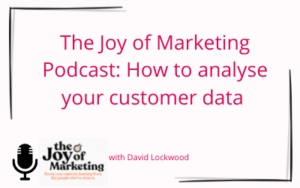Every month of Q1 2022 saw sub 20% declines as IMRG reported a quarter that went backwards for many companies in the industry. And with comments ranging from ‘lumpy’ to ‘a shocker’, our April Retail Leaders Forum attendees reflected the challenging nature of the last quarter.
So, what were the experiences of multi-channel retailers over Q1? We asked senior retail leaders at the Tapestry Retail Leaders Forum and they gave the following key insights:
Inflation and interest rates reared their ugly heads
For decades we’ve been a low inflation economy, but Q1 saw it climb to 7% by March, with more rises to come. Add to this the news around fuel and energy price hikes and their impact on disposable income, it’s not surprising consumers reined in spending. But unlike past crises, when dampened demand fed into lower costs, these continued to rise, forcing retailers to review their prices.
At the same time, interest rates rose to their highest rate since 2009, making future investment decisions harder for businesses as the cost of borrowing rises.
It was a quarter of bad news
The Ukraine invasion was a turning point for many of the forum’s attendees, as consumers turned to their devices for news rather than shopping. February also saw a cluster of storms that affected the desire to spend, and the cold weather experienced in February persisted into March, which again suppressed demand. And with a late Easter this year, this inevitably pushed some spend into April and Q2.
Customer recruitment was hard
As consumers pulled back on spend in Q1, they stuck with brands they trusted rather than shopping with new ones. This was reflected in retailers’ search and traffic volumes being significantly down across most categories, with one gifting business experiencing a 50-60% decline over the quarter. All this made customer acquisition challenging.
Digital became more expensive
Retailers across the board faced a perfect storm as demand outstripped supply for online advertising. While online traffic volumes fell, existing demand did not change and was supplemented by increasing numbers of VC-backed brands entering the market. With more businesses chasing fewer eyeballs, media costs jumped significantly. While one subscription business saw CPC (cost per click) rates rise by 23%, others experienced more dramatic 35%+ increases.
And despite attempts to optimise activity, any performance improvements were offset by these higher advertising costs, which had a knock-on effect on an already challenging customer recruitment environment.
One clothing retailer tried to plug the gap in its digital business by increasing marketing spend but found the higher costs made it difficult for this strategy to work.
iOS updates continued to impact campaigns, especially on Facebook. Here businesses experienced poorer performance and less visibility into campaign conversions, making this a less valuable channel.
And conversions fell
It was a double whammy for digital as higher costs didn’t translate into better performance.
Although the IMRG reported conversion rates in Q1 fell slightly but were stable, the experience of the forum attendees was more marked. While open rates and clicks held up for some, buying decisions were much slower than previously, leading to declining conversion rates. As consumers became savvier shoppers, greater motivation was required to encourage them to spend. One e-commerce company only saw purchasing uplift when they launched their sales and interest converted into purchases.
One attendee noted its competition launched their new range and then immediately had a sale, indicating the lengths retailers were forced to go to encourage consumers to buy.
Market location influenced sales
When it came to international sales, location was key. The closer a market to Ukraine, the greater the impact on business. While the UK began to see slight improvements for one gifting business, its mainland European markets continued to fare poorly. But for companies trading in the US – further removed from the conflict – conditions proved better, with performances slightly ahead of plan.
Overall, every multi-channel retailer attending the forum faced challenging times over Q1, irrespective of their sector. But it wasn’t all doom and gloom. In our next post, we’ll discuss what’s helped mitigate some of these challenges and how a change in weather is ushering in improving consumer confidence.




